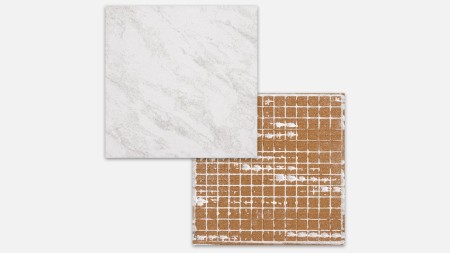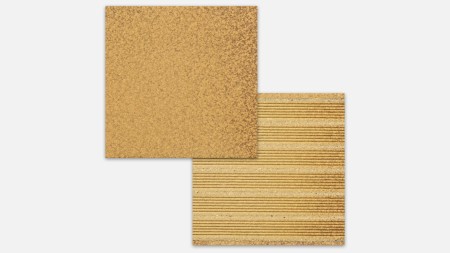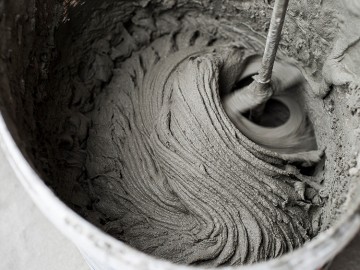
How to Avoid Tile Failure by Choosing the Right Tile Adhesive
Delamination of tiles is a common sight. One main reason is that, while a lot of thought and investment goes into the selection of tiles, the tile adhesive does not get much attention. This is a fundamental mistake, as we want to show here.
Modern tiles are different in many ways to the tiles we used to install 20 years ago. We want to focus here on one aspect: water absorption and its influence on adhesion.
Water Absorption and Adhesion
Ceramic tiles are classified by their water absorption capacity, among other properties. “EN 14411 ceramic tiles and slabs – definitions, classification, quality characteristics and marking” divides tiles and slabs into three groups. The water absorption capacity Eb (E from the French for eau) is measured in % and indicates the mass of water that can be absorbed relative to the existing mass and/or defines the maximum permissible value. The following images show typical examples for different tile categories from the front and back.
Category BIa:
Impervious – Extremely High Density

Tiles with very low water absorption of less than 0.5%, examples: porcelain tiles, unglazed or fully vitrified
Example: glazed porcelain with back mesh, Eb ≤ 0.1%
Category BIb:
Fully Vitrified – High Density

Tiles with low water absorption of more than 0.5%, but less than 3.0%, examples: gres ceramic tile
Example: unglazed ceramic tile. This tile additionally has a 0.5 < Eb ≤ 3.0%
Category BIIa:
Semi-Vitreous – Medium Density

Tiles with medium water absorption of more than 3.0%, but less than 6.0% (ceramic)
Example: glazed ceramic tile, additionally with a porous profile back pattern 3.0 < Eb ≤ 6.0%
Category BIIb:
Non-Vitreous – Low Density

Tiles with high water absorption of more than 6.0% (ceramic)
Example: glazed ceramic tile with a porous profile back pattern, 6.0 < Eb ≤ 10.0%
Tiles Have Changed – Tile Adhesive Should Too

According to our research, around 40% of all tiles used worldwide in 2020 were tiles with a water absorption rate of 0.5% or lower (as defined by the American Society for Testing and Materials (ASTM)section C373). This has to do with aesthetics but also with practical reasons. The lower the water absorption, the higher the durability and strength.
Porous tiles absorb not only water but also dirt, oil and salt. They tend to stain, have low abrasion resistance and are difficult to use in wet areas. Also, they are less suited for interior wet areas or exterior applications, where they tend to break after exposure to rain and freeze/thaw cycles. In all of these cases, tiles with low water absorption are increasingly preferred. But how do these modern tiles adhere? The key comes from construction chemistry. When tile adhesives are polymer-modified, they ensure adhesion between a large number of substrates and even very dense tiles.
Traditional tile adhesives, consisting of cement, fillers and water, worked well for porous tiles. The cement can penetrate the pores of the tile, forming an anchorage between the tile and tile adhesive. As a result, traditional tile adhesive provides enough bond strength for the tile.
When the same tile adhesive is applied to a modern porcelain tile, however, the cement cannot bond to the back side. After hardening, the adhesive fails, and tiles delaminate.
Under the Microscope: Ceramic Tile vs. Porcelain Tile

Polymer Modification Balances Low Water Absorption
Polymer-modified tile adhesives provide extra binding power. When hardening, the polymer forms bridges and adheres physically even to very smooth and dense tiles. The photo shows a polymer-modified ceramic tile adhesive on the back of a porcelain tile. The cement crystals are complemented by “glue-like” polymer bridges that adhere strongly to the tile.
Conclusion: Modern Tiles Need Modern Tile Adhesives
Different classes of tiles need different tile adhesives. As a general rule, the denser the tile, the higher the polymer content should be. According to EN 12004-1, S1 tile adhesives combined with 5 – 6% polymer are typically recommended for very dense porcelain tiles. For large formats, S2 adhesives with up to 12% polymer may be required in order to ensure good adhesion and provide enough flexibility to cope with the stress between substrate and tile. While this of course makes tile adhesives more expensive, it remains only a fraction of the overall cost – a small percentage that can cause or save a lot of trouble.
Download the full article as PDF (see download box)
With VINNAPAS® we offer a wide range of polymer dispersions and dispersible powders for the modification of tile adhesives.
Would You Like to Know Out More about Our Tile Adhesive Solutions?
With WACKER’s wide range of products, you can formulate the perfect tile adhesive. Visit our product section for all the details.
To the product portal





